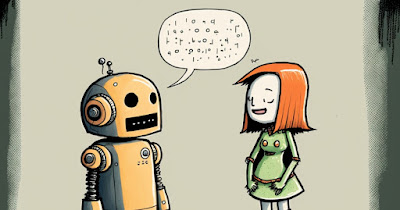The answers we receive from ChatGPT do not convince us? Let’s see how to write the questions we ask to the AI engine, obtaining better results

Dialoguing with ChatGPT may not be easy, given that its answers will be based exclusively on what we write. If we write badly, ChatGPT’s answers won’t be precise or full of details, giving the illusion of not knowing how to work.
In this guide we have collected the best tricks to give precise and effective commands to ChatGPTthus generating text inputs so effective that they unleash the full power of ChatGPT, which will be able to answer us with absolute precision based on its language model.
READ ALSO -> How to access ChatGPT
1) Break complex questions into smaller parts
The Roman “divide and conquer” is always current, also with ChatGPT. Instead of writing a novel from the first message written on ChatGPT, it is better to divide the request into many parts, so that the language can respond to each point of it and provide a precise answer.
An example can be “What are the best ways to feel good all year round, eat healthy and live longer?”, we can generate two questions like “What are the best ways to keep us healthy?”, “What are the healthier foods” and “What are the ways to live longer?”
Obviously not all requests are well suited to splitting, but in most cases we will get great answers with many more short sentences (20-25 words) than with a single sentence of 200 words.
2) Avoid ambiguous or vague language
Nothing is more useless than being vague or generic with ChatGPTwhich is structured to provide coherent answers based on the type of sentence proposed: if we are vague, ChatGPT will also provide us with vague and sometimes useless answers.
An example of a bad request is “What do you think of the new book by the author Pincopallo?”, which can become much more effective by writing “What do you think of the plot and character development in the new book “Le Ali” by the author Pinco Pallo ?”
3) Provide good examples of what you want
ChatGPT is very effective if we provide examples of what we want to get from him. To take full advantage of its potential we can use a sort of “comparison mode”, writing to ChatGPT the starting situation and what we would like to obtain (in the text, in the code or in the sentence).
An example could be the one available below:
Puoi aiutarmi a generare delle espressioni regolari per HTML? Questo è il codice di partenza "codice-HTML", vorrei che il codice diventasse così "Codice-HTML-ripulito". Quale espressione regolare posso utilizzare?
ChatGPT’s comparison capabilities are impressive and help the synthesis engine a lot, which will create regular expressions or any other necessary correction showing what to do, which code to use or which program to start.
4) Avoid suggestible questions
It seems strange to say but ChatGPT is easily influenced: his language adapts to ours and, if we want to obtain a precise opinion from him, inevitably the opinion will be the mirror of what we write to him.
In fact, if we write “Do you think XYZ is the best restaurant in town?” he will almost always respond by stating our own opinion (even if we’re talking about the worst restaurant in town), limiting himself to providing alternatives.
We avoid questions that influence him too much, writing requests like “What are your favorite restaurants in town and which would you like to eat at?”
5) Use open questions
Another effective trick to get accurate and reliable answers from ChatGPT plans to use open-ended questionsavoiding the use of questions that require only “Yes” or “No” as an answer.
An example of a bad question to ask to ChatGPT is “Do you like tiramisu?”, which can become much more effective by asking something like “What are the ingredients for your favorite tiramisu?”
6) Provide a precise context
Provide a precise context of the request made it will make the answer much more precise, by using simple dates or places in the right part of the sentence.
An example of contextualization of ChatGPT requests is on the question “How many inhabitants does Rome have?”, which can become something more precise such as “How many inhabitants does Rome have in 2023?” or “How many inhabitants did Rome have in 1200?”
Conclusions
ChatGPT still has so much to give to humanity, but it is said that humanity is not really ready! We begin to use simple, direct and punctual sentences for receive accurate and consistent answers from ChatGPTwhich will quickly adapt to everything we write (only if we write well).
The talk about how to use ChatGPT for creative purposesuseful and fun continues in another article.
These tips are also useful on other AI synthesis engines, such as for example Bing Chat.
To find out the alternatives we can read our guides to best alternatives to ChatGPT that work in Italian and you have best AI (Artificial Intelligence) experiment sites.
